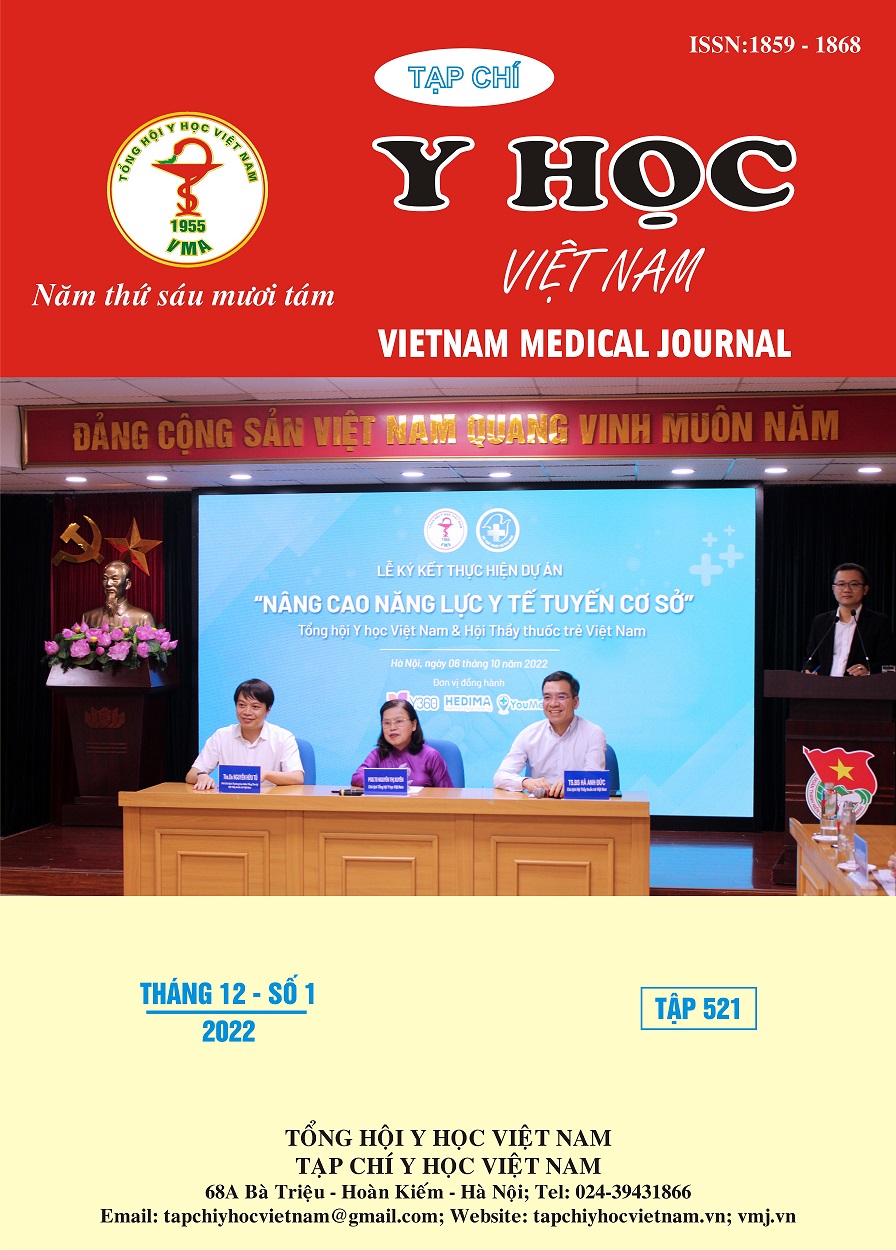CLINICAL CHARACTERISTICS OF COATS DISEASE AT VIETNAM NATIONAL INSTITUTE OF OPHTHALMOLOGY
Main Article Content
Abstract
Purpose: To present clinical characteristics of Coats disease at Vietnam National Institute of Ophthalmology. Methods: Descriptive study based on case series was performed of 30 patients diagnosed with Coats disease at Vietnam National Institute of Ophthalmology from June 2021 to September 2022. Results: The mean age of patients at diagnosis was 9.13 ± 5.38 with 29 males and 1 female. The rate of diseased eyes was 43.3% in the right eye, 53.3% in the left eye and one patient had disease in both eyes. The most common symptom was decreased visual acuity (90%) followed by strabismus (43%) and then leukocoria (36%). Mean corrected visual acuity was 1.9±1.06 logMAR. Retinal telangiectasia was most commonly involved temporal quadrant in 80% of eyes while just involved nasal quadrant in only 20% of eyes. The mean range of retinal telangiectasia was 7.00 ± 2.81 clock hours. Macular-off retinal detachment was present in 45% of eyes and macular edema was present in 42% of eyes. Stage 2B was the most common with 10 eyes while there was only 1 eye at stage 2A. The mean age of patients with diagnosis at stage 2A to stage 3A was 10.63 ± 6.11, at stage 3B to stage 5 was 6.47 ± 3.20. Conclusion: Coats disease commonly occurs unilaterally in young males. Typical disorders are peripheral telangiectasia and temporal retinal exudation. The common stage in the study is 2B. Early-onset patients often have more severe symptoms.
Article Details
Keywords
Coats disease, telangiectasia, exudation.
References
2. Shields CL, Schoenberg E, Kocher K, Shukla SY, Kaliki S, Shields JA. Lesions simulating retinoblastoma (pseudoretinoblastoma) in 604 cases: results based on age at presentation. Ophthalmology. 2013;120(2):311-316. doi:10.1016/j.ophtha.2012.07.067
3. Kang HG, Kim JD, Choi EY, et al. Clinical features and prognostic factors in 71 eyes over 20 years from patients with Coats’ disease in Korea. Scientific Reports. 2021;11(1):6124. doi:10.1038/s41598-021-85739-9
4. Shields CL, Udyaver S, Dalvin LA, et al. Coats disease in 351 eyes: Analysis of features and outcomes over 45 years (by decade) at a single center. Indian J Ophthalmol. 2019;67(6):772-783. doi:10.4103/ijo.IJO_449_19
5. Al-Qahtani AA, Almasaud JM, Ghazi NG. Clinical characteristics and treatment outcomes of coats disease in a saudi arabian population. Retina. 2015;35(10):2091-2099. doi:10.1097/IAE.0000000000000594
6. Morris B, Foot B, Mulvihill A. A population-based study of Coats disease in the United Kingdom I: epidemiology and clinical features at diagnosis. Eye. 2010;24(12):1797-1801. doi:10.1038/eye.2010.126
7. Shields JA, Shields CL, Honavar SG, Demirci H. Clinical variations and complications of Coats disease in 150 cases: the 2000 Sanford Gifford Memorial Lecture. Am J Ophthalmol. 2001;131(5):561-571.


